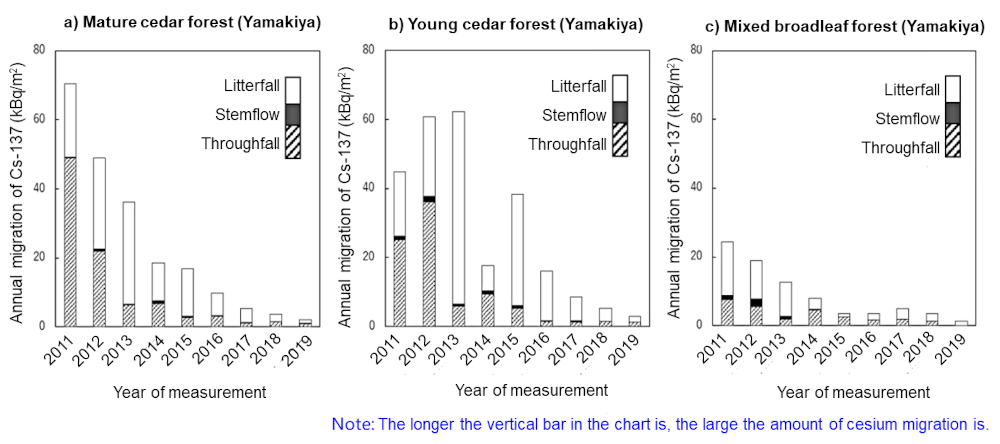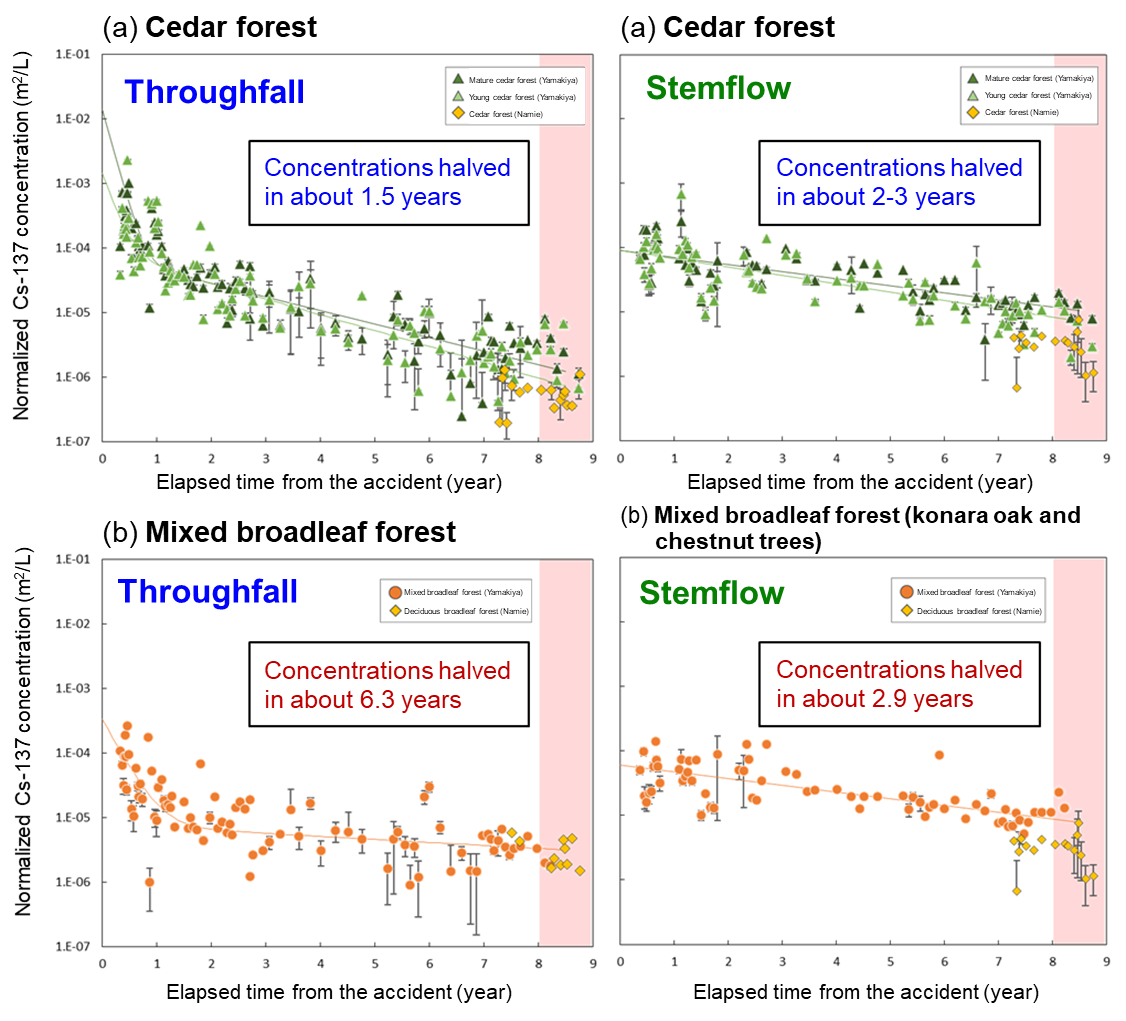Radioactivity Dynamics in forests
(2019)
QHow does radioactive cesium in forests move from trees to the ground surface? 【Movement in throughfall, stemflow, and litterfall】
ASurveys in Kawauchi Village and Kawamata Town, Fukushima Prefecture, detected radioactive cesium in throughfall, stemflow, and litterfall, suggesting that radioactive cesium moves from trees to the ground surface through these materials.
However, radioactive cesium concentrations in them are decreasing over time.
- Surveys in Kawauchi Village and Kawamata Town show that in both cedar forests and mixed broadleaf forests, the amount of radioactive cesium (137Cs) deposited through throughfall and litterfall tends to decrease over time.
- In the above areas, 137Cs concentrations in stemflow indicated a tendency to decrease overall. This shows that although 137Cs still exists in stemflow, its contribution to the total deposition amount is low.

Fig.1 Cesium migration through throughfall, stemflow, and litterfall (from the top part of trees to the forest floor)
- In the surveyed forest areas, the amount of cesium migration from the top part of trees (crowns) to the forest floor has been rapidly decreasing over time.
- The amount of migration in FY2019 reduced to roughly half that in the previous year.
- It is assumed that cesium migration from the top part of trees (crowns) to the forest floor is currently very limited (slow).

Fig.2 Changes in Cs-137 concentrations in throughfall and stemflow over time
Cs-137 concentrations in throughfall are still decreasing, as they had until last fiscal year.
* What is a normalized cesium concentration?
It is calculated by dividing the concentration in the given sample by the total amount of cesium at the sampling site. Comparisons of normalized values allow researchers to look at the monitoring data without the influence of variation in the total amount of cesium between sampling sites.

Fig.3 Changes in Cs-137 concentrations in litterfall over time
- Cesium concentrations are still decreasing, as they had until last fiscal year.
- In broadleaf forests (Japanese red pine and konara oak forests), no significant change was seen in the cesium concentration compared with the levels in last fiscal year.
Related articles
- Does radioactive cesium move from the ground surface to underground or into groundwater? 【Vertical movement in soil】
- How does radioactive cesium in forests move from trees to the ground surface? 【Movement as particulate and dissolved states】
- Dose the radiocesium discharge ratio from rivers depend on the local environment?
- Where is the radiocesium in river water coming from?
- What is the source of radio-cesium in the airborne dust sampling?
